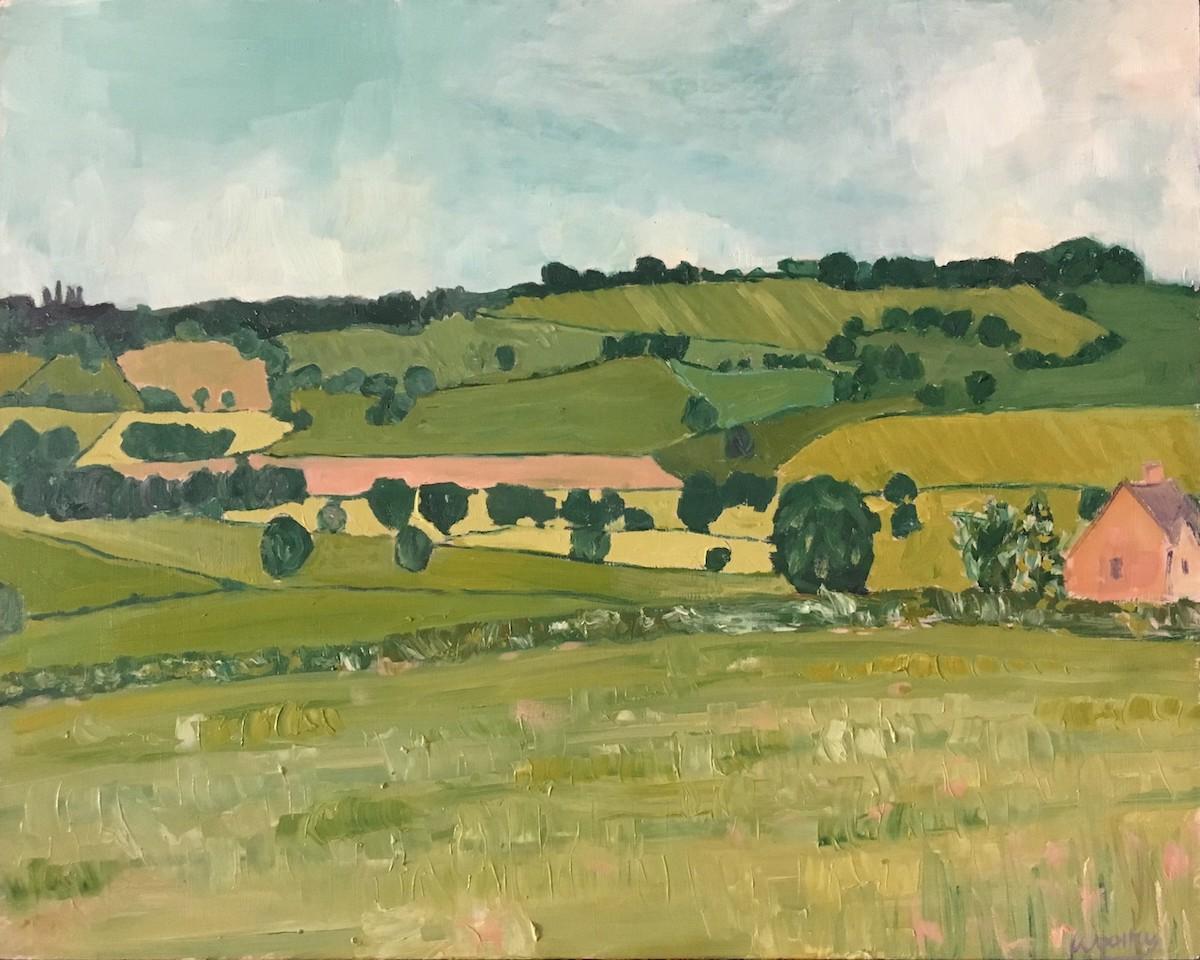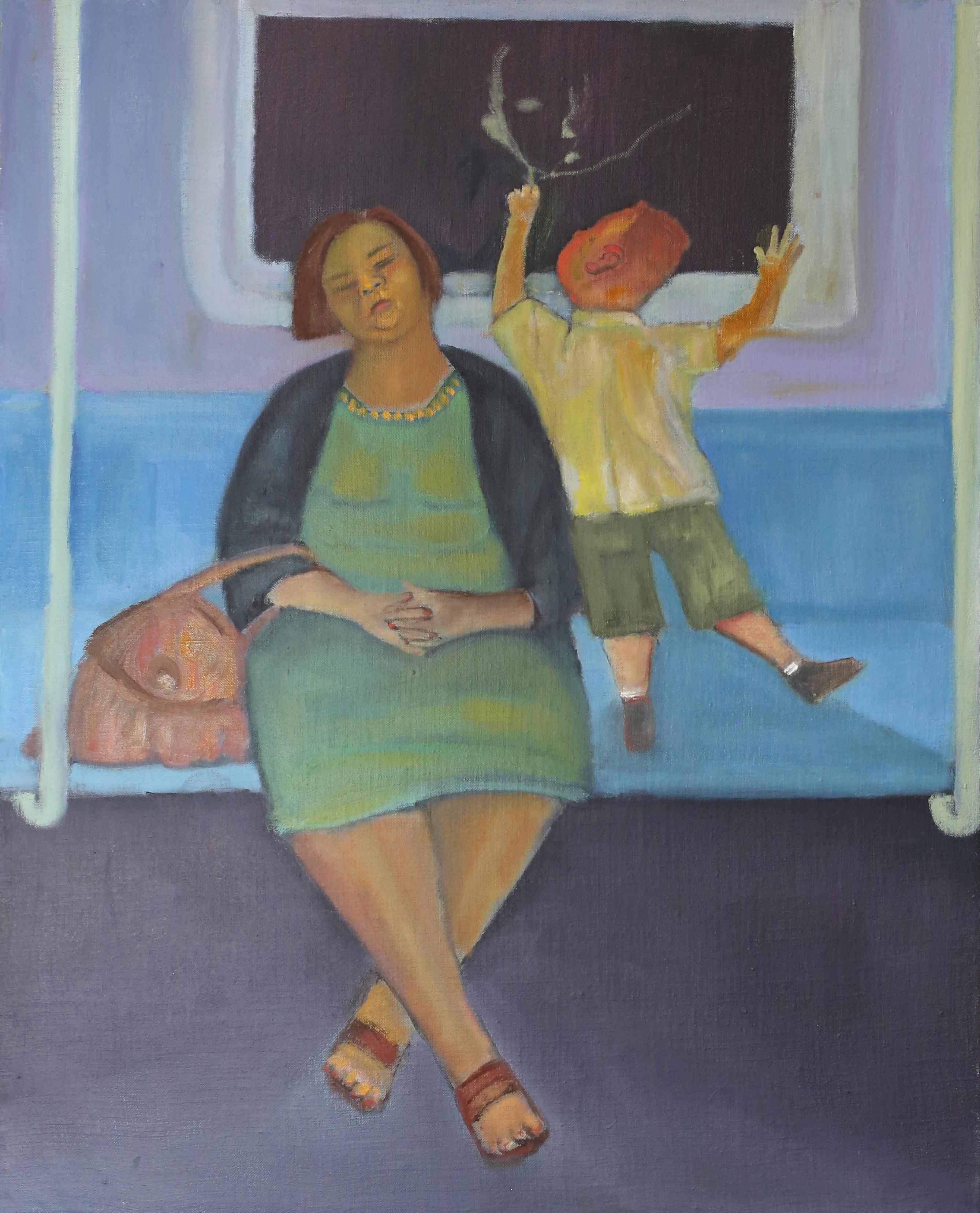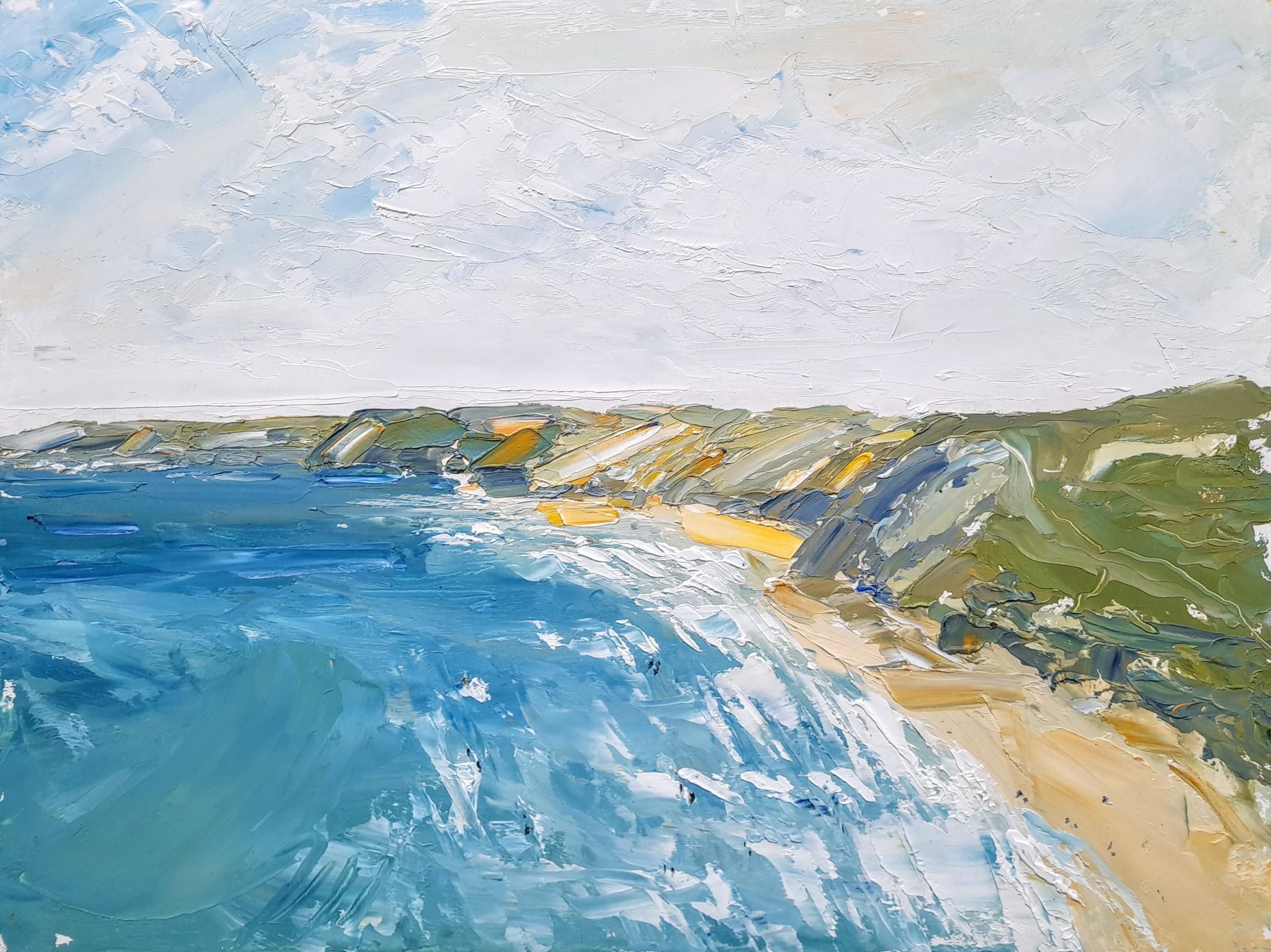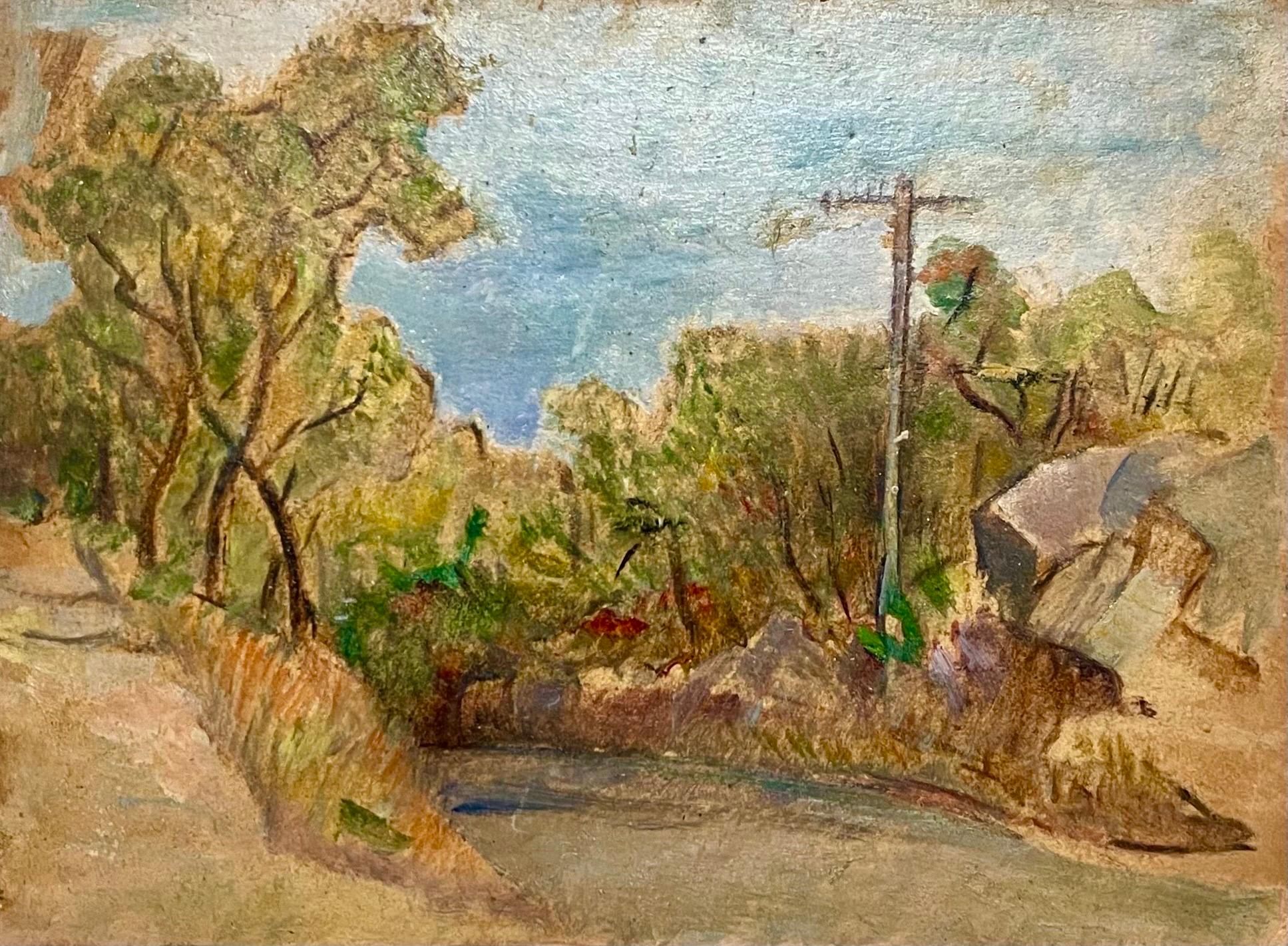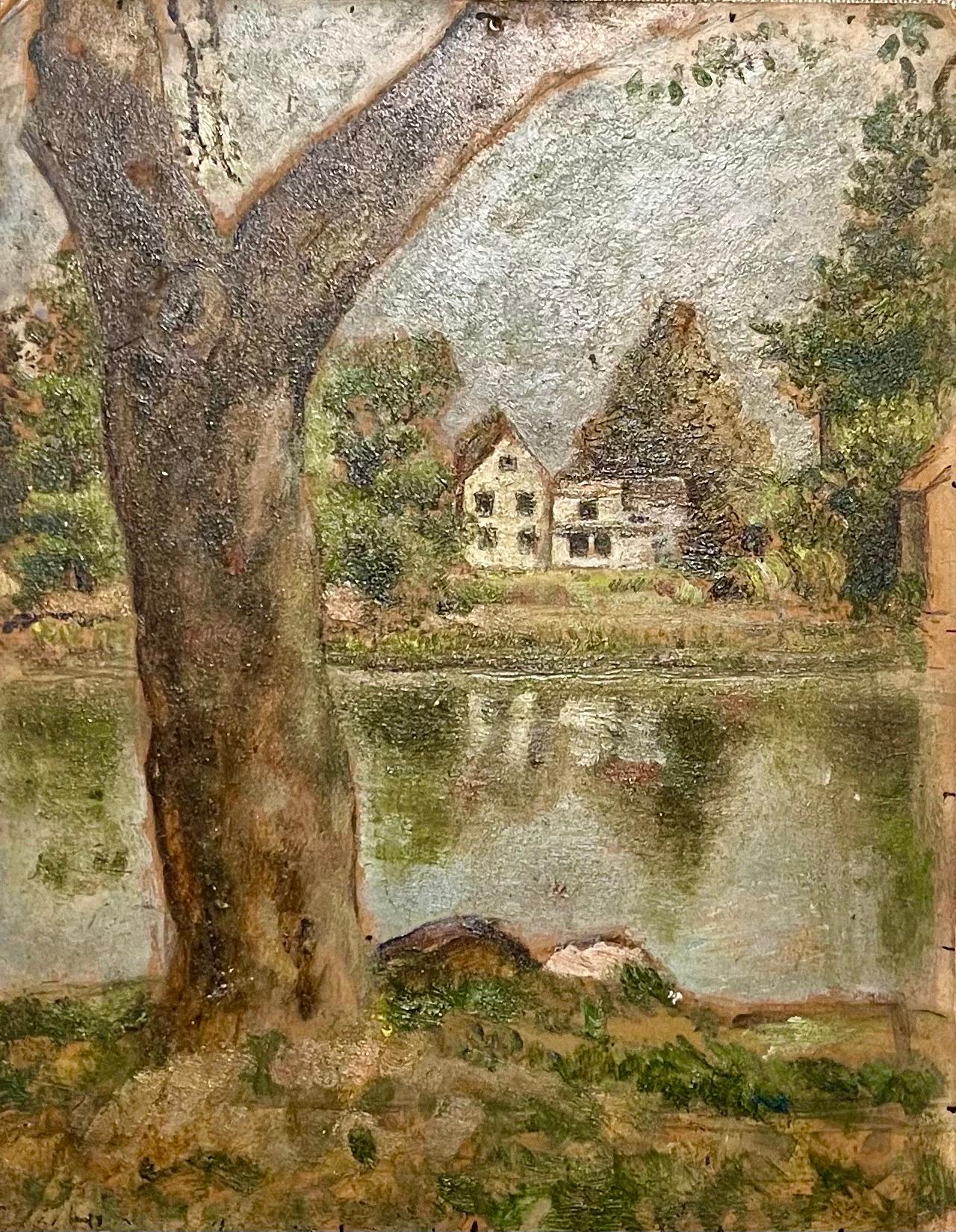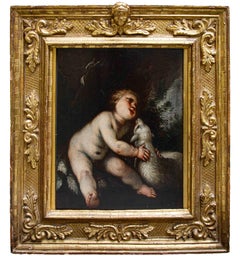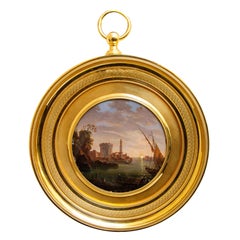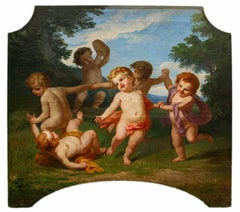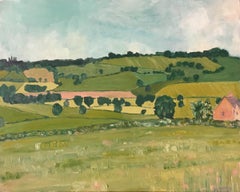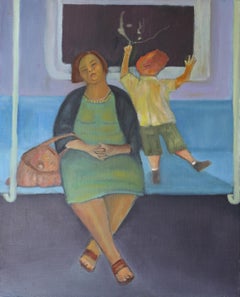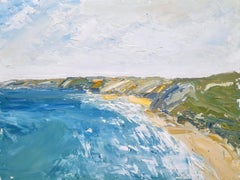Items Similar to Panel depicting pastoral scene attributed to Gerolamo da Ponte ( Bassano)
Want more images or videos?
Request additional images or videos from the seller
1 of 13
Panel depicting pastoral scene attributed to Gerolamo da Ponte ( Bassano)
About the Item
Gerolamo da Ponte (attr.) (Bassano 1566 - Venice 1621)
Pastoral Scene
Oil on panel, 44.5 x 36 cm
The Da Ponte family are concordantly known as Bassano, after the name of their city of origin, Bassano del Grappa: this conventional designation was fixed by art critics during the modern age. The Da Ponte's was an ante litteram, family-run business enterprise that operated for about a century and a half. Begun by Francesco the Elder in the very early years of the sixteenth century, it achieved great appreciation throughout northern Italy under the personality of Jacopo, beginning in the second half of the fourth decade assisted by his brothers Giambattista and Gianfrancesco. After him, it would be his sons Francis the Younger, Giambattista, Leandro and Jerome who would be the interpreters of the family tradition. Jacopo's successors used to take up the iconographic patterns and technical devices of the master, resulting in numerous versions of his best-known and commercially successful paintings. The painting has the typical Bassano style characteristics but it is curious that, in some of the most distinguished monographs devoted to the family of painters, first and foremost that of Edoardo Arslan, no such composition is recorded among Jacopo's works. Indeed, it is well known that the workshop was prolific in reiterating with minimal variations the proven paternal iconographies and that the same were in turn employed by its pupils. The analysis of the canvas under examination thus registers its own compositional autonomy, and observing the drafts and the type of faces, we recognize the characteristic pictorial conduct of Gerolamo da Ponte, the last son of Jacopo who ran the important workshop with his brother Giambattista during the first two decades of the seventeenth century. Last among Jacopo's sons, Gerolamo da Ponte was born in Bassano on June 3, 1566. A pupil and imitator of his father, he carried out an intense activity as a copyist. As early as 1580-81 he collaborated with Jacopo on the altarpiece with the Virgin and Saints Agatha and Apollonia, now in the Bassano Museum. He demonstrated particular skill, using a free, dismissive, almost haphazard brushstroke, a far cry from his father Jacopo's "constructive" one, basing his color range on notes of purplish, silvery gray, brown and olive. When his father died, Jerome leaned on Leandro, but his painting, which in his youthful phase had reported significant peaks of originality, lapsed into sterile formulas and excessive repetitiveness of models. After 1595 he moved to Venice, where he married Zanetta Biava, though he always remained in touch with his native place. Jerome's hand can be recognized in several works of the Bassanesque school, such as St. John the Evangelist in the Square Drawing Room in the Doge's Palace, a pallet with three saints at Hampton Court, and the Virgin with Sts. Fortunato and Ermagora, now in the Bassano Museum.
The painting depicts a nocturnal pastoral scene with two human figures and a flock of sheep. In the left foreground, a young shepherd in red clothing is intent on caring for the sheep. On the right, a second, older shepherd, dressed in dark clothing and wearing a hat, leads a majestic bull with glistening horns to pasture. A fine still life piece stands out in the lower right section of the painting. Attention to detail, realistic rendering of figures and animals, and the skillful use of chiaroscuro are elements, found in this painting, that certainly mark the activity of the second generation of the Bassano workshop.
- Attributed to:Gerolamo Bassano (1566 - 1621)
- Dimensions:Height: 17.52 in (44.5 cm)Width: 14.18 in (36 cm)
- Medium:
- Period:
- Condition:
- Gallery Location:Milan, IT
- Reference Number:1stDibs: LU2639216022402
About the Seller
No Reviews Yet
Vetted Professional Seller
Every seller passes strict standards for authenticity and reliability
1stDibs seller since 2023
- ShippingRetrieving quote...Shipping from: Milan, Italy
- Return Policy
Authenticity Guarantee
In the unlikely event there’s an issue with an item’s authenticity, contact us within 1 year for a full refund. DetailsMoney-Back Guarantee
If your item is not as described, is damaged in transit, or does not arrive, contact us within 7 days for a full refund. Details24-Hour Cancellation
You have a 24-hour grace period in which to reconsider your purchase, with no questions asked.Vetted Professional Sellers
Our world-class sellers must adhere to strict standards for service and quality, maintaining the integrity of our listings.Price-Match Guarantee
If you find that a seller listed the same item for a lower price elsewhere, we’ll match it.Trusted Global Delivery
Our best-in-class carrier network provides specialized shipping options worldwide, including custom delivery.More From This Seller
View AllSt. John and the Lamb panel by Giovanni Stefano Danedi known as Montalto
Located in Milan, IT
Giovanni Stefano Danedi known as Montalto (Treviglio, 1612 - Milan, 1690)
St. John with the lamb
Oil on panel, 35 x 27.5 cm
Framed, 51 x 47 cm
The work presented here constitutes...
Category
17th Century Figurative Paintings
Materials
Oil, Board
By Giovanni Battista del Verrocchio, Madonna and Child with St. John the Baptist
Located in Milan, IT
Giovanni Battista del Verrocchio, known as The Master of Volterra (Florence 1494 - 1569)
Madonna with Child and San Giovannino
Oil on panel, 63 x 50 cm
Frame: 92 x 80 cm
The styl...
Category
16th Century Other Art Style Figurative Paintings
Materials
Oil, Board
By Giovan Battista dell'Acqua, Marina with fortress
Located in Milan, IT
Giovan Battista dell'Acqua (Milan, 1790-1845)
Navy with fortress, 1833
Oil on canvas, 12 x 12 cm
Picture frame, 21 x 21 cm
Signed and dated on the back
Bibliography: Thieme-Beck...
Category
19th Century Other Art Style Figurative Paintings
Materials
Paper, Oil
By Angelo Monticelli, Dancing Putti
Located in Milan, IT
Angelo Monticelli (Milan, 1778-1837), attr.
Dancing putti
Oil on canvas, 122.5 x 131 cm
The canvas presented here, referable to the 19th century, constituted an exquisite example of a painting made to decorate a boiserie, as evidenced by the particularity of the format and the ornamental subject matter.
The theme of dancing putti takes up a widely used and experimented model around the 1620s, on which the greatest artists tried their hand: pordenone, author of the Dance of Putti now in the Uffizi Gallery in Florence, for example, was able to make use of multiple visual models to fine-tune this complex and original composition, such as having known Marcantonio Raimondi's famous engraving with a gyre of cupids, derived from an invention of Raphael himself and dated between 1517 and 1520. Over the following centuries, the fame of this prissy subject was never diminished.
In fact, the work under consideration can be attributed to the hand of 18th-century artist Angelo Monticelli, who specialized in tempera drawing and was a pupil of painter Andrea Appiani (1754-1817), active mainly in Lombardy, where, for the Teatro alla Scala he designed the figures of the box parapets (1807) and the curtain (1821). In 1826, during the repainting of Ferrara's Municipal Theater, Monticelli decorated the plafond with an Apotheosis of Lodovico Ariosto. The curtain of the Rossini Theater in Pesaro is also by his hand. For the Duke of Lodi Francesco Melzi...
Category
19th Century Other Art Style Figurative Paintings
Materials
Canvas, Oil
By Hans von Aachen (Cologne, 1552 - Prague, March 4, 1615), Nativity
Located in Milan, IT
Hans von Aachen (Cologne, 1552 - Prague, March 4, 1615)
Nativity
Oil on canvas, 37 x 29 cm
Framed, 63 x 50 cm
Born to a noble and prestigious family originally from the city of ...
Category
17th Century Figurative Paintings
Materials
Canvas, Oil
The Expulsion of Hagar painted by Ciro Ferri
Located in Milan, IT
Cyrus Ferri (Rome, 1634 - 1689)
The Expulsion of Hagar
Oil on canvas, 69 x 58.5 cm
Framed, 81 x 70 cm
The subject of the work belongs to the Old Testament stories: Hagar was the ...
Category
17th Century Figurative Paintings
Materials
Canvas, Oil
You May Also Like
Looking over to Maugersbury Hill, Eleanor Woolley, Contemporary art
Located in Deddington, GB
Looking over to Maugersbury Hill by Eleanor Woolley [2019]
Original painting and hand signed by the artist
Gesso and oil on board
Image size: H40cm x W:50cm
Complete size of unfra...
Category
21st Century and Contemporary Impressionist Landscape Paintings
Materials
Gesso, Oil, Board
Surreal Children Fantasy Oil Painting 1956
Located in Douglas Manor, NY
3981 Children's fantasy figurative oil painting set in a hand painted oak frame
Image size 15.5x19.25"
Category
1950s Figurative Paintings
Materials
Oil, Board
The Budding Artist urban narrative muted blue colors subway scene
By Stephen Basso
Located in Brooklyn, NY
Oil on linen mounted on board signed and dated on reverse.
Category
2010s American Modern Figurative Paintings
Materials
Linen, Board, Oil
A Breezy Day at Perranporth, Cornwall by Georgie Dowling, Coastal Art
Located in Deddington, GB
Breezy day at Perranporth, Conrwall by Georgie Dowling [2022]
original
oil paint on board
Image size: H:30 cm x W:40 cm
Complete Size of Unframed Work: H:30 cm x W:40 cm x D:3cm
...
Category
21st Century and Contemporary Contemporary Landscape Paintings
Materials
Oil, Board
Simka Simkhovitch WPA Artist Oil Painting Gouache American Modernist Powerline
By Simka Simkhovitch
Located in Surfside, FL
Simka Simkhovitch (Russian/American 1893 - 1949)
This came with a small grouping from the artist's family, some were hand signed some were not.
These were studies for larger paintings.
Simka Simkhovitch (Симха Файбусович Симхович) (aka Simka Faibusovich Simkhovich) (Novozybkov, Russia May 21, 1885 O.S./June 2, 1885 N.S.—Greenwich, Connecticut February 25, 1949) was a Ukrainian-Russian Jewish artist and immigrant to the United States. He painted theater scenery in his early career and then had several showings in galleries in New York City. Winning Works Progress Administration (WPA) commissions in the 1930s, he completed murals for the post offices in Jackson, Mississippi and Beaufort, North Carolina. His works are in the permanent collections of the Dallas Museum of Art, the National Museum of American Art and the Whitney Museum of American Art. Born outside Kyiv (Petrograd Ukraine) into a Jewish family who owned a small department store. During a severe case of measles when he was seven, Simcha Simchovitch sketched the views outside his window and decided to become an artist, over his father's objections. Beginning in 1905, he studied at the Grekov Odessa Art School and upon completion of his studies in 1911 received a recommendation to be admitted to the Imperial Academy of Arts. Though he enrolled to begin classes in architecture, painting, and sculpture at the Imperial Academy, he was dropped from the school roster in December because of the quota on the number of Jewish students and drafted into the army. Simchovitch served as a private in the 175th Infantry Regiment Baturyn [ru] until his demobilization in 1912. Re-enrolling in the Imperial Academy, he audited classes.
Simka Simkhovitch exhibited paintings and sculptures in 1918 as part of an exhibition of Jewish artists and in 1919 placed 1st in the competition "The Great Russian Revolution" with a painting called "Russian Revolution" which was hung in the State Museum of Revolution. In 1922, Simkha Simkhovitch exhibited at the International Book Fair in Florence (Italian: Fiera Internazionale del Libro di Firenze). In 1924, Simkhovitch came to the United States to make illustrations for Soviet textbooks and decided to immigrate instead. Initially he supported himself by doing commercial art and a few portrait commissions. In 1927, he was hired to paint a screen for a scene in the play "The Command to Love" by Fritz Gottwald and Rudolph Lothar which was playing at the Longacre Theatre on Broadway. Art dealers began clamoring for the screen and Simkhovitch began a career as a screen painter for the theater. Catching the attention of the screenwriter, Ernest Pascal, he worked as an illustrator for Pascal, who then introduced him to gallery owner, Marie Sterner. Simkhovitch's works appeared at the Marie Sterner Gallery beginning with a 1927 exhibit and were repeated the following year. Simkhovitch had an exhibit in 1929 at Sterner's on circus paintings. In 1931, he held a showing of works at the Helen Hackett Gallery, in New York City and later that same year he was one of the featured artists of a special exhibit in San Francisco at the California Palace of the Legion of Honor in Lincoln Park. The exhibit was coordinated by Marie Sterner and included four watercolors, including one titled "Nudes". He is of the generation of Russian Soviet artists such as Isaac Pailes, Serge Charchoune, Marc Chagall, Chana Orloff, Isaac Ilyich Levitan, and Ossip Zadkine.
In 1936, Simkhovitch was selected to complete the mural for the WPA Post office project in Jackson, Mississippi. The mural was hung in the post office and courthouse in 1938 depicted a plantation theme. Painted on the wall behind the judge’s bench, “Pursuits of Life in Mississippi”, a depiction of black workers engaged in manual labor amid scenes of white professionals and socialites, was eventually covered over in later years during renovations due to its stereotypical African American imagery. Simka painted what he thought was typical of Jackson. His impression of pre-civil rights Mississippi was evidently Greek Revival column houses, weeping willow trees, working class families, and the oppression of African Americans. He painted African American men picking cotton, while a white man took account of the harvest and a white judge advised a white family, calling it Pursuits of Life in Mississippi.
Though clearly endorsed by the government and initially generally well-received, the mural soon raised concerns with locals as the climate toward racial segregation began to change. The main concern was whether depictions that show African Americans in subjugated societal roles should be featured in a courtroom. The following year, his painting "Holiday" won praise at an exhibition in Lincoln, Nebraska. In 1940, Simkhovitch's second WPA post office project was completed when four murals, "The Cape Lookout Lighthouse and the Orville W. Mail Boat", "The Wreck of the Crissie Wright", "Sand Ponies" and "Canada Geese" were installed in Beaufort, North Carolina. The works were commissioned in 1938 and did not generate the controversy that the Jackson mural had. The main mural is "The Wreck of the Crissie Wright" and depicts a shipwreck which had occurred in Beaufort in 1866. "The Cape Lookout Lighthouse and the Orville W. Mail Boat" depicted the lighthouse built in 1859 and the mail boat that was running mail during the time which Simkhovitch was there. The boat ran mail for the area until 1957. "Sand Ponies" shows the wild horses common to the North Carolina barrier islands and "Canada Geese" showed the importance of hunting and fishing in the area. All four murals were restored in the 1990s by Elisabeth Speight, daughter of two other WPA muralists, Francis Speight...
Category
1930s American Modern Landscape Paintings
Materials
Oil, Board, Gouache
Simka Simkhovitch WPA Artist Oil Painting American Modernist Landscape Pond Tree
By Simka Simkhovitch
Located in Surfside, FL
Simka Simkhovitch (Russian/American 1893 - 1949)
This came with a small grouping from the artist's family, some were hand signed some were not.
Thes...
Category
1930s American Modern Landscape Paintings
Materials
Oil, Board
